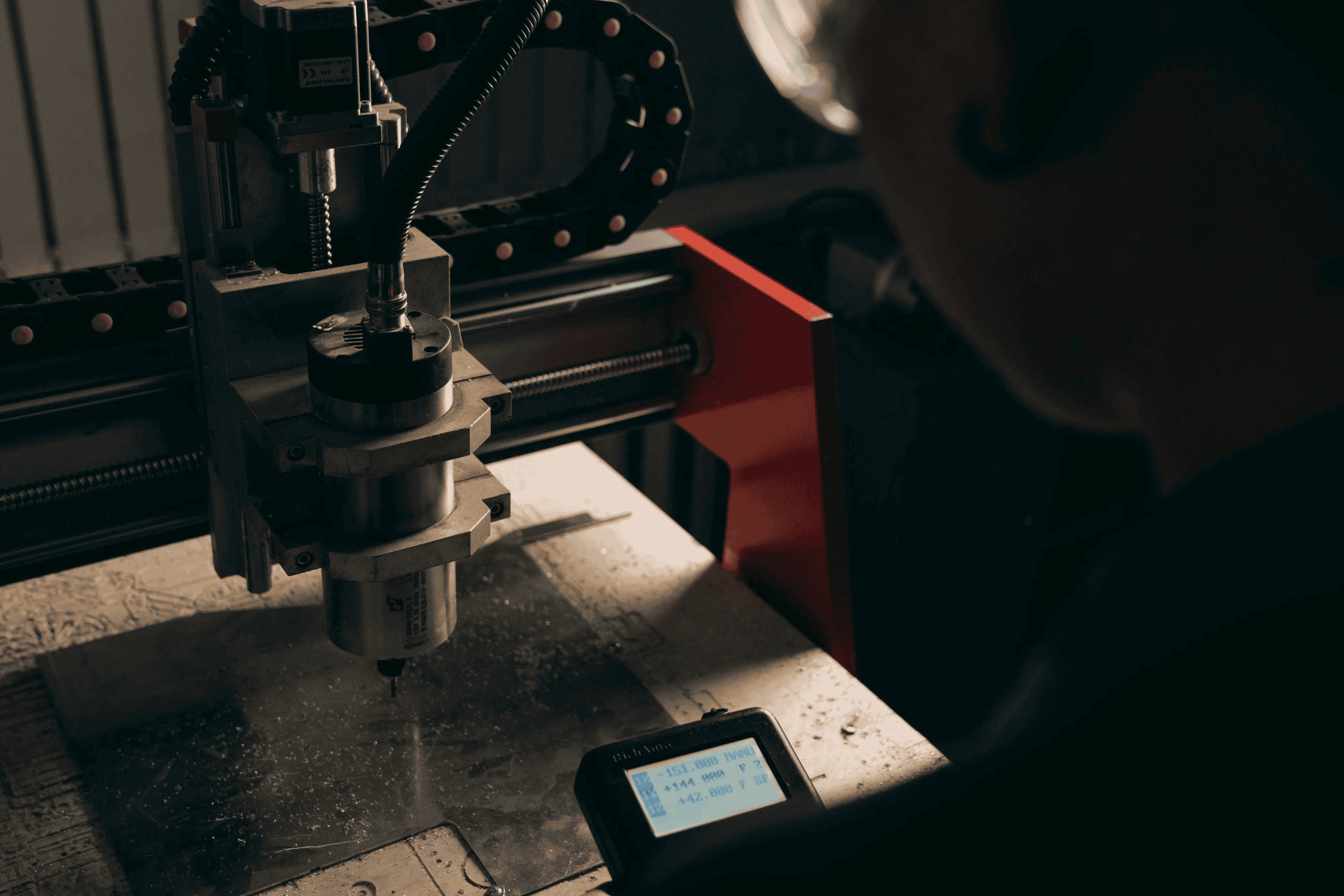Custom Fabrication

Metal laser cutting services use a tightly focused beam to melt or vaporize material along a programmed toolpath. The beam is guided by CNC motion while an assist gas clears molten material and cools the cut. Fiber lasers dominate modern sheet processing because their wavelength couples efficiently with metals, enabling high speed and narrow kerf. The result is precise contours, fine features, and repeatable parts with minimal thermal distortion.
Close up of sheet metal cutting with industrial laser head using metal laser cutting services
Lasers handle carbon steel, stainless, aluminum, and non ferrous alloys like brass and copper. Typical benefits include small heat affected zones, excellent edge quality, and reduced secondary finishing. For cutting sheet profiles, lasers excel at intricate geometry, tight inside radii, and dense nesting to maximize material yield. When compared to mechanical processes, lasers avoid tool wear and can switch between materials with minimal downtime.
Three elements define cut performance: optical focus, beam quality, and assist gas. Focus determines kerf width and energy density at the cut front. High beam quality concentrates power for faster cuts and smoother edges. The assist gas influences speed and finish. Oxygen promotes a reactive cut for carbon steel at thicker gauges but may leave a light oxide. Nitrogen creates bright, oxide free edges that are paint and weld ready, ideal for stainless and aluminum. Argon is used for specialty alloys sensitive to oxidation.
Achievable tolerances depend on material, thickness, and machine calibration. For thin sheet, positional accuracy often lands within a few thousandths of an inch, with kerf widths that support detailed features and small slot sizes. Edge quality is shaped by speed, power, focus, and gas selection. Proper parameters reduce dross, minimize micro burring, and produce edges that require little or no deburring. When surface finish matters, a nitrogen cut usually provides the cleanest edge.
Selecting the right approach for cutting sheet starts with material and thickness. Carbon steel cuts quickly and economically, stainless demands clean edges for corrosion resistance, and aluminum needs dialed settings to control reflectivity and heat input. Feature density, hole sizes, and minimum web thicknesses should match the laser’s kerf and the alloy’s mechanical behavior to prevent warping or tip ups.
Good design practices make a big difference. Add lead ins and micro tabs where needed to keep small parts secure during the cut. Avoid heat build up by sequencing cuts from smaller features to larger contours and distributing pierce points to limit heat concentration. Use smart nesting for maximum sheet utilization and consistent grain direction when cosmetic brushing or bending will follow.
Fiber lasers handle a broad envelope. Thin sheet moves fast with crisp edges, while thicker plate is limited by power, gas choice, and thermal management. Stainless and aluminum benefit from high pressure nitrogen to maintain bright edges. Copper and brass are workable with appropriate settings and beam delivery precautions. Always confirm thickness capability and desired finish before finalizing a print.
Several factors drive pricing and lead time. Material utilization and nesting efficiency impact cost per part. Total cut length, pierce count, and travel time contribute to cycle time. Assist gas selection influences both cut quality and operating cost. Setup includes programming, fixturing, and first article verification. Post processing like deburring, tumbling, or brushing adds time but can be streamlined when the laser parameters are tuned for clean edges.
Quality control starts with flat, certified material and a clean, focused beam. Consistent pierce routines prevent blow back that marks the surface. Programmers validate geometry, tolerances, and bend deductions if forming follows. A first article inspection confirms dimensions and edge condition before a production run begins. Safety measures include proper fume extraction, enclosure interlocks, and trained operators who understand beam hazards and material handling.
When you need a partner to turn drawings into accurate parts, OZK can step in with programming, nesting, and downstream fabrication. Our team can take your DXF or STEP, confirm tolerances for sheet metal cutting, and coordinate finishing or integration into assemblies. Explore our custom fabrication capabilities, review specific fabrication services, and see why choose OZK for precise work and clear communication.
Whether your priority is speed on thin gauge, tight positional tolerances, or a bright, weld ready edge, metal laser cutting services offer a proven path. For complex profiles and efficient cutting sheet production, lasers provide the accuracy and throughput modern projects demand. Share your drawings, target quantities, and material specs, and we will help you translate that intent into parts that fit, assemble, and perform.
Ready to move from CAD to finished parts with consistent accuracy and fast lead times? Tell us about your material, thickness, and quantities, and we will quote your job. Submit your drawings today and let OZK Customs turn your design into production ready components.
ADDRESS:
6159 E Huntsville Rd, Fayetteville, AR 72701
PHONE:
(479) 326-9200
EMAIL:
info@ozkvans.com